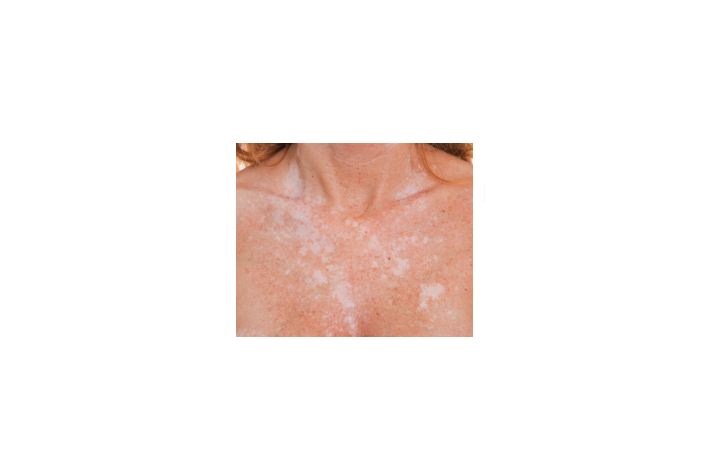Dr. Anthony Rossi discusses and provides pearls for recognizing and caring for cancer patients’ dermatologic sequelae to improve quality of life.
With Anthony M. Rossi, MD

“Even though today’s cancer therapies are highly effective at treating cancer, many patients are left with dermatologic sequelae from therapy that can impact them physically, psychosocially, and remind them of the cancer,” said Anthony M. Rossi, MD, Mohs surgeon and Assistant Attending at Memorial Sloan Kettering Cancer Center, New York, New York.
“You do not have to work at a cancer center to take an interest in oncodermatology, a subset of dermatology focused on treating patients that have active cancers and are going through therapy or patients that were treated for cancer and are now living with the sequelae.”
According to Dr. Rossi, cancer treatment commonly and greatly affects how patients feel about their skin, hair, nails, and overall quality of life.
Cancer patients’ long-term survival has doubled in recent decades, and it is projected that U.S. cancer survivors will approach 22.1 million by 2030. Along with treatment success comes an increase in dermatologic side effects. Nearly 60% of adult survivors of childhood cancer reported dermatologic issues. And up to one-third of all cancer patients point to dermatologic sequelae as the most impactful cancer therapy consequence, according to a review by Dr. Rossi and coauthors in the Journal of the American Academy of Dermatology.1[Restorative oncodermatology: Diagnosis and management of dermatologic sequelae from cancer therapies – Journal of the American Academy of Dermatology (jaad.org)]
Specific Skin Issues
The review addresses how dermatologists might safely and effectively treat cancer therapy sequelae.
“Traditional chemotherapy can result in a host of skin issues, from rashes to hair loss, skin cracking, and fissuring. With the advent of more targeted therapies, like small molecule inhibitors and even more so with immunotherapies that are revving up our immune system to fight cancer, we are seeing different skin issues. For example, immunotherapy can cause a rash or induce a vitiligo-like type of depigmentation,” said Dr. Rossi.
Therapies can affect skin in a way that may not initially be visible but can affect dermatologic treatment outcomes. For example, targeted therapies, such as the vascular endothelial growth factor inhibitor bevacizumab, severely impair wound healing, said Dr. Rossi.
“Radiation therapy for breast cancer can result in chronic radiation dermatitis, leaving telangiectasias on the radiated skin that continue to grow many years after radiation is completed.”
As a result, his patients describe feeling limited in their clothing options and even embarrassed to expose their skin to partners, said Dr. Rossi.
“I did a pilot trial using the pulsed dye laser to treat breast telangiectasias in women who had breast cancer and not only was the laser successful at treating the telangiectasias, but we showed how you can do it with safe parameters to avoid injuring the skin. That is important because radiated skin is more fragile than nonradiated skin.”2 [Radiation-induced Breast Telangiectasias Treated with the Pulsed Dye Laser (nih.gov)]
Dr. Rossi authored the paper “Effect of Laser Therapy on Quality of Life in Patients With Radiation-Induced Breast Telangiectasias,” [Effect of Laser Therapy on Quality of Life in Patients With Radiation-Induced Breast Telangiectasias (nih.gov)] and found the treatment dramatically improves not only the physical but also the social and psychosocial domains.3
“Radiation can harden the skin, a condition called radiation fibrosis. To treat it, we use the fractional CO2 laser, which drills microscopic holes in the skin to improve skin collagen growth and skin flexibility and viability.”
Scars
Scarring from surgical procedures to treat cancer is also common. Even tracheostomies can leave very visible scars that can be improved with scar revision surgery or with lasers.
“Lasers are my go-to for scars, but when treating cancer patients who have been treated surgically and radiated, we have to take this slowly and conservatively because the skin may not heal as well. We take time to explain to the patient that this is more of a long-term gain.”
Hair Loss
Chemotherapy can result in permanent chemotherapy-induced alopecia, and endocrine therapy can cause endocrine-induced alopecia.
“I have an ongoing clinical trial using platelet-rich plasma (PRP) for these types of hair loss. We are hoping to finish in 2022 and publish our results,” said Dr. Rossi.
(Anti)Aging
“I am very much interested in the aging that happens when people undergo cancer therapy. This is an evolving area but… we can use lasers, neurotoxins, and injectable fillers in a safe, effective manner. We report in the article when you should time these.”
The key, said Dr. Rossi, is to provide oncodermatology in concert with the patient’s oncology team.
“[An] example of why it is important to talk with a patient’s surgeon or oncologist is if you are lasering the chest of women who have been radiated who may have breast implants. You have to be careful in terms of how the breast reconstruction was done. If the implant is above the muscle, that skin that creates the breast flap is thin and if it is radiated, it is even thinner and can break down causing implant loss.”
Dermatologists have an important part to play in the care of cancer patients—not only in the treatment of their skin, hair and nails during cancer therapy but also in letting patients know that dermatologic manifestations after cancer therapy can safely be treated.
“A lot of oncologists may not know these treatments are available, so we are trying to spread the word not only in dermatology but also all the other specialties.”
By Lisette Hilton
References:
- Rossi AM, Hibler BP, Navarrete-Dechent C, Lacouture ME. Restorative Oncodermatology: Diagnosis and Management of Dermatologic Sequelae from Cancer Therapies. J Am Acad Dermatol. 2021;85:693-707. doi: 10.1016/j.jaad.2020.08.005.
- Rossi AM, Nehal KS, Lee EH. Radiation-Induced Breast Telangiectasias Treated With the Pulsed Dye Laser. J Clin Aesthet Dermatol. 2014 Dec;7(12):34-7. PMID: 25584136; PMCID: PMC4285448.
- Rossi AM, Blank NR, Nehal K, Dusza S, Lee EH. Effect of Laser Therapy on Quality of Life in Patients With Radiation-Induced Breast Telangiectasias. Lasers Surg Med. 2018;50(4):284-290. doi:10.1002/lsm.22780.

